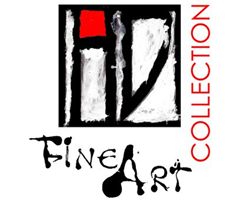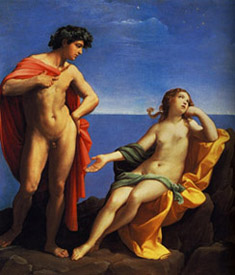Product Description
Alfred Meyer-Bernburg, Bacchus, Oil on board, 1924


ALFRED MEYER-BERNBURG (1872-?) Berlin & Munich, Germany
Bacchus 1924
Oil on board
Signed: Alfred Meyer-Bernburg MCNN 1924 (lower right on the canvas)
Image: H: 16” x W: 11”
Framed: H: 23 1/4” x W: 18 3/8”
Price: $39,000
Alfred Meyer-Bernburg was born in Bernburg, Germany on July 27th, 1872. He studied at the Akademie in Berlin from 1891-92 and later at the Akademie der Bildenden Kuenste in Munich from 1897-1904. Meyer-Bernburg was a member of the Münchner Künstlergruppe (MKG).
Alfred Meyer-Bernburg, Bacchus, Oil on board, 1924
ALAN DURMAN (1905-1963) UK
Adam and Eve in the Garden of Eden c. 1945
Oil on aluminum panel on a wood structure, elaborately carved gilt wood frame
Painting: H: 23 1/4” x W: 30 3/16”
Framed: H: 28 3/4” x W: 35 9/16”
Alan Durman was born in Saltford, England and worked as a local muralist where his most important work is on display at the Saltford Community Hall. The largest mural of the three celebrates the community and shows the indigenous landscape as a backdrop to dancing and frolicking locals. The other two paintings show a view across Kelston village to Kelston Round Hill, a significant local landmark and in the other a verdant view featuring an ancient forest across to the River Avon. In the late 1930’s and 40’s Durman directed his talent as an illustrator and designed many posters. He created travel related posters for British Railways (BR) and the British Transport Commission (BTC) which featured stylish and active young families at sea side resorts.
ROGER GEORGES ANDRÈ DUVAL (1901-?) Meudon (Seine-et-Oise), France
La Chambré 1924
Oil on canvas
Signed and dated: ROGER DUVAL XXIV(lower left)
Exhbited: Paris, Salon des Indépendants, 1926, no. 1122
For more information see: Dictionnaire des Peintres, Sculpteurs, Dessinateurs et Graveurs, Vol. 4, E. Bénézit (Paris: Librairie Gründ, 1976).
Painting: H: 23 2/3” x W: 36 1/5”
Framed: H: 35” x 47 5/8”
Roger Duval painted in a modernist figurative style and beginning in 1920 regularly exhibited at the Salon d’Automne and the Salon des Indépendants in Paris. In 1925 he was awarded a prize by Paul Poiret for a painting entitled Conversation and again in 1926 for another painting entitled Bal Musette. Also in 1926, La Chambrée (1924) was exhibited in Paris at the Salon des Indépendants. By 1928 Duval’s technique had evolved into a moderninst/cubist style and a group of his paintings were featured in an Exposition of Painting and Sculpture in Boston, MA.
It is interesting to note Duval’s shared vision with Picasso in their depiction of peasant figures in repose. Their full-bodied, voluptuous and sensual forms illustrate both artists’ sculptural approach to painting in the early 1920s. However by the mid-1920s Duval and Picasso’s painting styles evolved from these softer, rounded shapes into more angular, abstracted forms.
